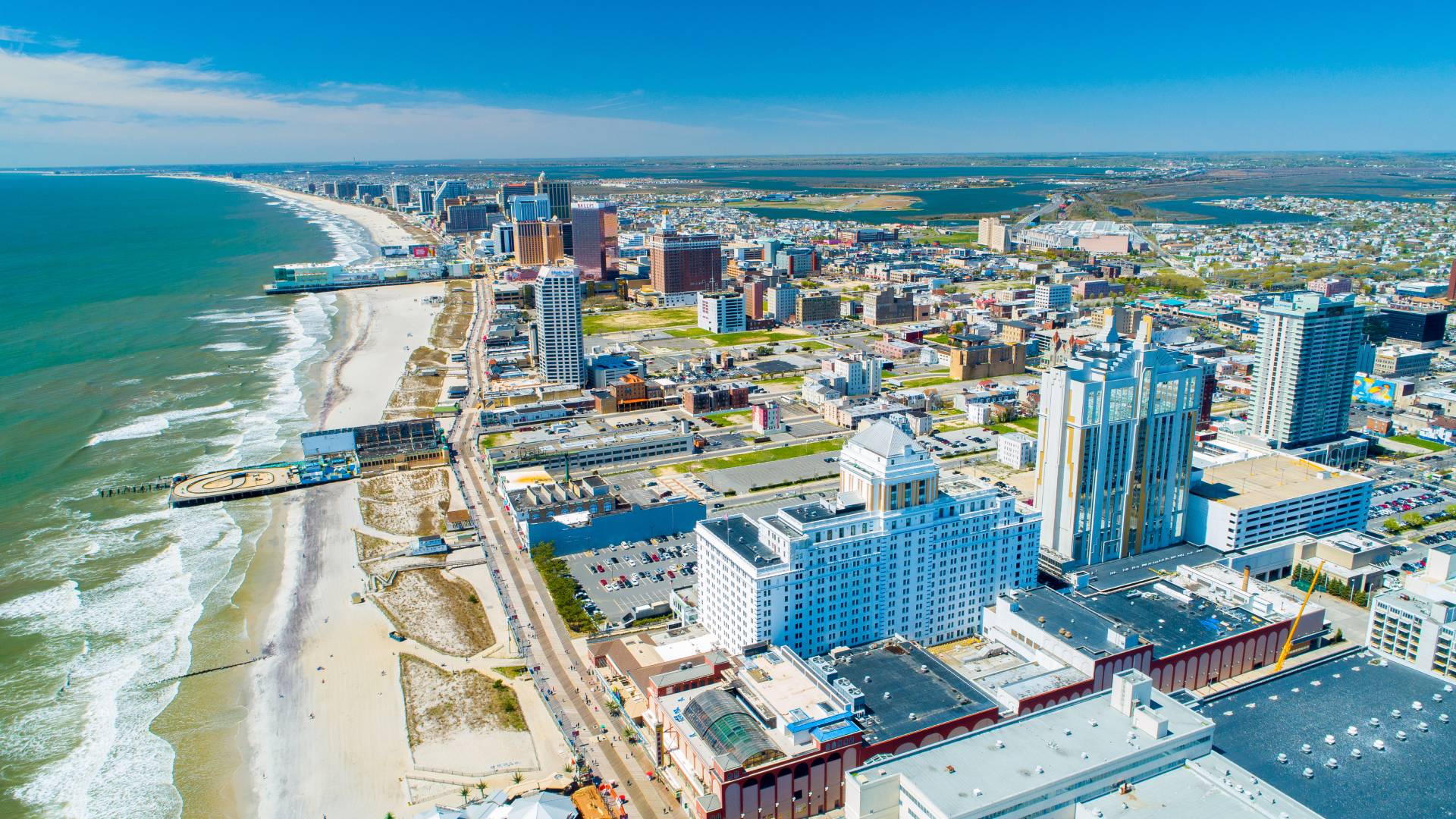Like many of the 21,735 casino workers in New Jersey, Mike Luko’s ability to get to and from work can be affected by the direction of the moon, the phase of the moon and what storms are nearby, all of which affect coastal flooding.
“Sometimes it’s a hassle, they end up detouring you at Route 9, or they close the road,” said Luko, of Egg Harbor City. Luko takes the White Horse Pike to get to his job as a carpenter for Bally’s Atlantic City, unless the spilled over bays get in the way.
On average, it’ll happen two dozen times a year. According to the Union of Concerned Scientists, that’s how many times the tide gauge at Steel Pier in Atlantic City detects tidal flooding, roughly six times more annually than in the 1950s and 1960s.
It’s not just commuters who contend with the tidal flooding on the roads. Tens of millions of tourists travel to Atlantic City each year.
“We’re a driving market, we’re a large driving destination,” said Michael Chait, president of the Greater Atlantic City Chamber. “It’s two factors, it’s getting home and working.”
Chait described the Black Horse Pike as a “perfect example” of an important road where operations are disrupted by floodwaters.
“When you look at roadways and the infrastructures that currently exist, there are enormous issues. … That also carries into our tourism,” Chait said.
While the roads in and around Atlantic City have been affected by tidal flooding throughout the city’s history, the frequency of flooding is on the rise because of the 1.5 feet of local sea level rise that has occurred since 1911, according to the National Oceanic and Atmospheric Administration. Exacerbating the flooding is the sinking of land, or subsidence, along the mid-Atlantic coastline.
…
Robert Noland, a professor at the Edward J. Bloustein School of Planning and Public Policy at Rutgers, worked with a Rutgers colleague and Climate Central’s sea level scientists to investigate how rising seas could affect workers in Atlantic and Cape May counties.
The research combined localized sea level projections with information about road networks to identify where travel would be blocked by coastal flooding, and how many workers that would cut off from their jobs. This information was combined with a “gravity model,” a planning tool that provides a measure of access based on travel time to job locations.
The paper, published two years ago, warned that increasing sea levels will have “large impacts on people and the economy, and large populations will have access to employment disrupted well before their own properties or places of employment may begin to flood.”
While most climate impacts are felt far more acutely by low-income communities than wealthy ones, Noland said that “in this case, because there are a lot of wealthy households along the shore, they were getting hit hard” as well in the research findings.
And while coastal flooding is widely perceived to be a coastal issue, Noland warned that inland roads also flood throughout the area and that the research showed these closures would increasingly affect workers.
A “big limitation” of the research was that it approximated where residents’ jobs were located, Noland said, but it helps to demonstrate the skyrocketing impacts as seas continue to rise. The researchers developed a measure of job accessibility and looked at how it would be reduced throughout the two-county area as water levels continue to rise.
In Gardner’s Basin, job accessibility falls by more than four-fifths with one foot of sea level rise, according to Noland’s research. In Atlantic City’s Chelsea Heights neighborhood, job accessibility falls more than three-fifths. Six feet of sea-level rise, which is theoretically possible this century, would virtually eliminate job accessibility in the area.
Noland’s projections assume that roadways and other infrastructure remain unchanged through the coming decades. Efforts to protect them from flooding will reduce the impacts, and the state and local governments have myriad projects planned or underway to protect traffic from worsening hazards.
Like other state agencies, the New Jersey Department of Transportation has assembled a working group to help plan for extreme weather. The group is “developing recommendations that will be incorporated in our project designs and infrastructure maintenance practices” to protect the state’s roadways from effects of climate change, spokesperson Jim Barry said.
Some 4,175 casino employees live in mainland communities where Route 30 offers the most direct access to Atlantic City. More frequent flooding would mean they would have to pay a toll and ride the Atlantic City Expressway, something commuters such as Luko would rather not do.
For him and for Becktel, who has grown accustomed to his rusting fire hydrant, solutions to sea level rise — both long- and short-term — can’t come soon enough.
